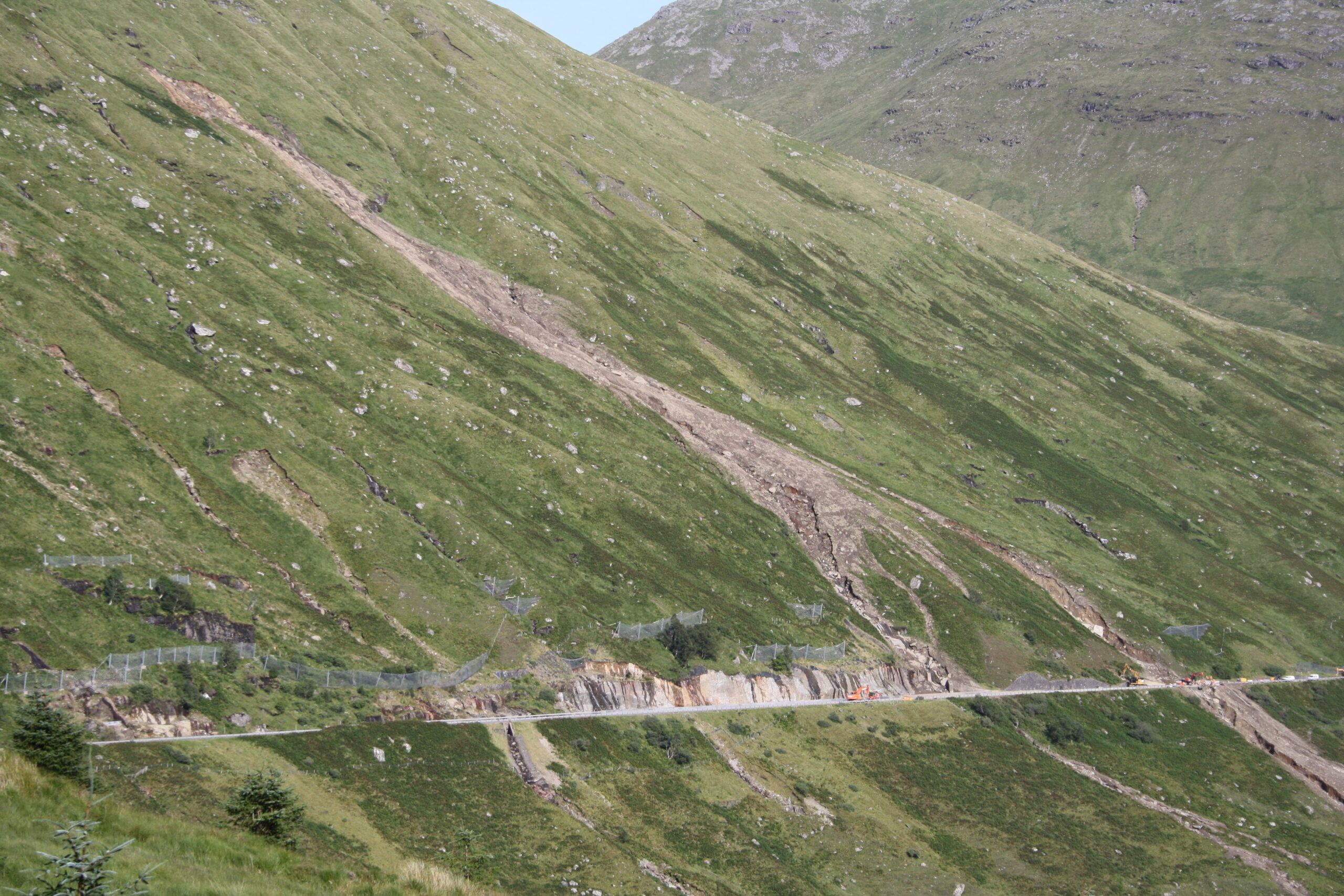
Conservationists slam Rest and Be Thankful tunnel to protect vehicles from landslips
A conservation charity has slammed Transport Scotland’s plans to build a tunnel on the Rest and Be Thankful to protect vehicles from landslips.
The Friends of Loch Lomond and The Trossachs has listed 26 issues with Transport Scotland’s preferred solution to help keep the notorious landslip road open.
In June the agency unveiled plans for an open-sided shelter costing up to £470m as its preferred solution.
The A83, one of Scotland’s most famous tourist routes, is a 100-mile major trunk road connecting the Mull of Kintyre and southern Argyll to the shores of Loch Lomond.
But it has regularly been closed by falling rocks and debris in recent years.
In a letter to Transport Scotland, Friends of Loch Lomond and The Trossachs slated the concrete tunnel as “unsightly and noisy” and said it would fail in the long run.
The group said the tunnel would spoil “a famous, historic and iconic location of outstanding scenic value.”
They also said the shelter and catch pits and their access track will be “expensive and time consuming to construct.”

Chairman, John Urquhart, said: ‘Having completely failed to grasp the importance of the cultural and scenic value of this iconic location, Transport for Scotland (TfS) is well behind the curve on this one.
‘The Rest is one of Scotland’s finest and most travelled mountain passes and solving the A83 debris flow problem there should have been grasped as a golden opportunity to create a world class “Gateway” experience for travellers journeying through the magnificent mountain scenery of the Arrochar Alps.
‘Instead, TfS has gone for the comfort blanket approach of sticking to the existing road alignment which is to be protected by an ugly shelter comprising a concrete wall and roof, from which excavators will clear avalanche debris collected in pits dug behind the wall.
‘As with the similarly troubled A82 upgrade, it seems the engineers have just been left to get on with it. Without proper oversight, it is hardly surprising they have come up with an unimaginative scheme which delivers the worst of all outcomes.
‘Not only will the concrete tunnel be unsightly and noisy, in the long run it is likely to fail.
‘Any geomorphologist would point out that “Managed Retreat” is the most sustainable way forward when faced with powerful geomorphic forces on the scale we see on the steep slopes above the road where thousands of tonnes of unconsolidated glacial debris lie poised ready for lubrication by the next extreme rainfall event.
‘It is difficult to comprehend how such a short sighted and damaging scheme could ever have been selected and we wonder if the process was perhaps driven by politicians looking for a populist headline rather than a balanced consideration of all the evidence.
‘Both the A82 and A83 schemes are being promoted as being the cheapest and quickest, but we have seen that kind of claim before in relation to ferries.
‘The reality is that neither of them make much sense.’
The group is arguing for a viaduct or viaduct and short tunnel option which they said would cause minimal disturbance to the environment and scenery.

A Transport Scotland spokesperson said: ‘Following a thorough assessment of five route options, including one consisting of a 1.8km long viaduct, the preferred debris flow shelter route option performed most favourably across a broad range of environmental criteria, including; cultural heritage, visual, population and human health, climate and materials, and waste. It also has the greatest potential to be delivered quickly, and presents the greatest opportunity to encourage sustainable travel.
‘The identification of the preferred route option through the Glen Croe valley is a very important milestone in finding a solution to this long-standing problem. The proposed new debris flow shelter will help protect the road and road users from future landslides.
‘The consultation on this ended on July 28th and we are now considering the many responses to it as the design work is taken forward at pace to further develop our proposals, including the detailed development and assessment of the preferred option along with the preparation of an Environmental Impact Assessment, draft Road Orders and draft Compulsory Purchase Orders.
‘At the same time, we are working hard to increase the resilience of the temporary diversion route along the Old Military Road (OMR), with construction beginning later this year on the first phase to realign its southern end.
‘In advance of the construction work starting, the recent ground investigations, now finished, will help determine the conditions of the terrain for this part of the temporary diversion route.
‘The planned improvements of the OMR will increase resilience of the temporary diversion route by reducing the likelihood of landslides impacting the route.
‘This will mean more certainty for locals and road users if the A83 has to shut due to adverse weather conditions.
‘These developments underline the Scottish Government’s commitment to work with key stakeholders and local communities and ensure that Argyll & Bute remains open for business.’
Read more on Scottish Field’s News pages.
Plus, don’t miss the September issue of Scottish Field magazine.
TAGS

